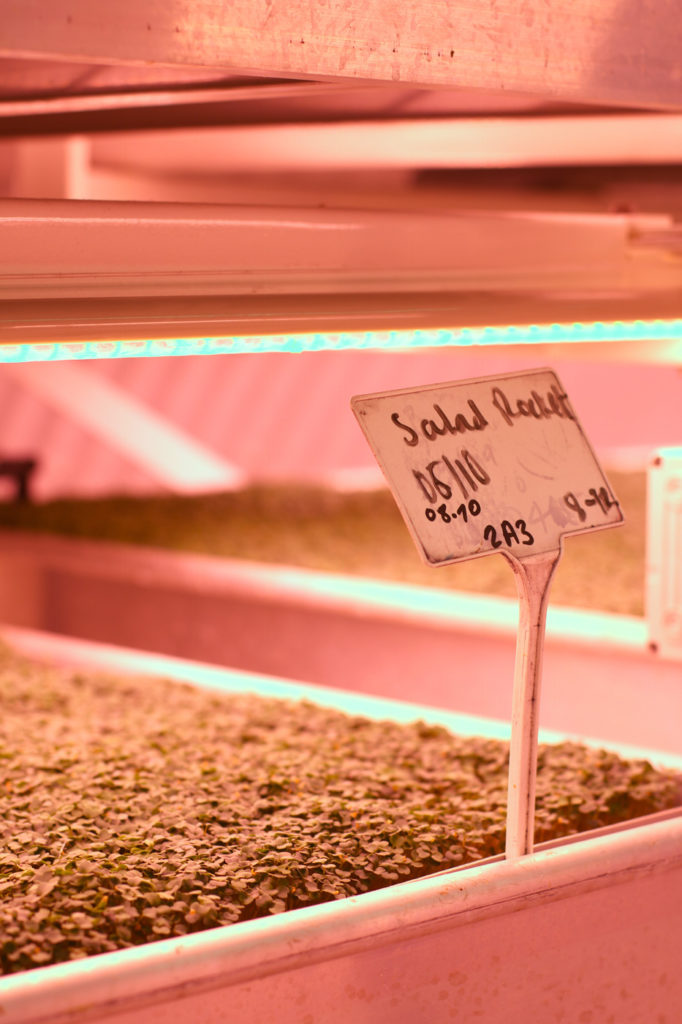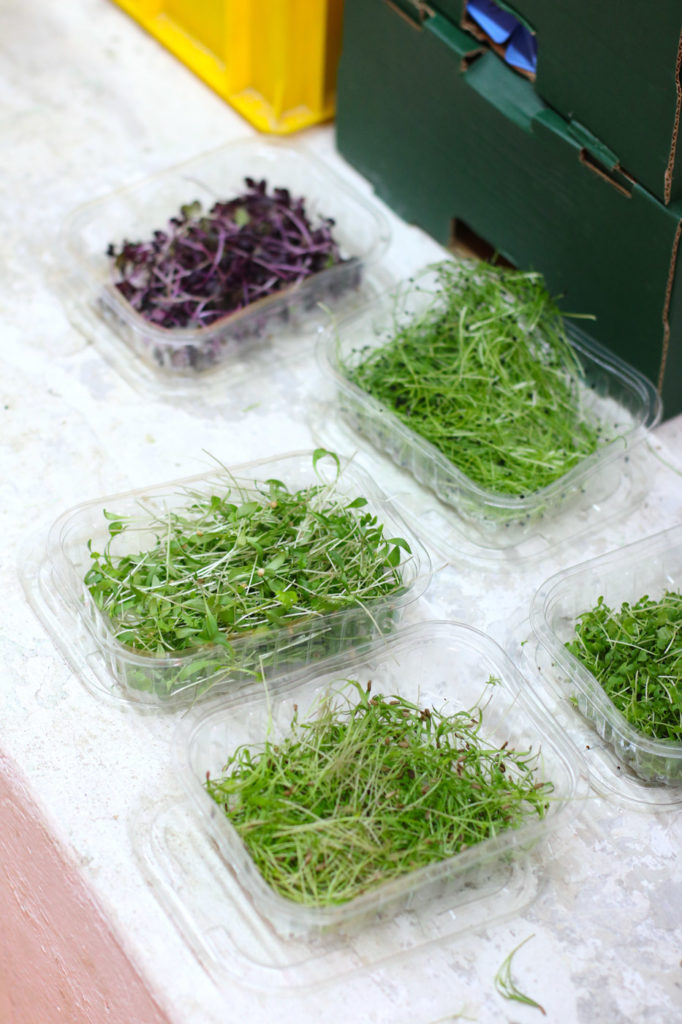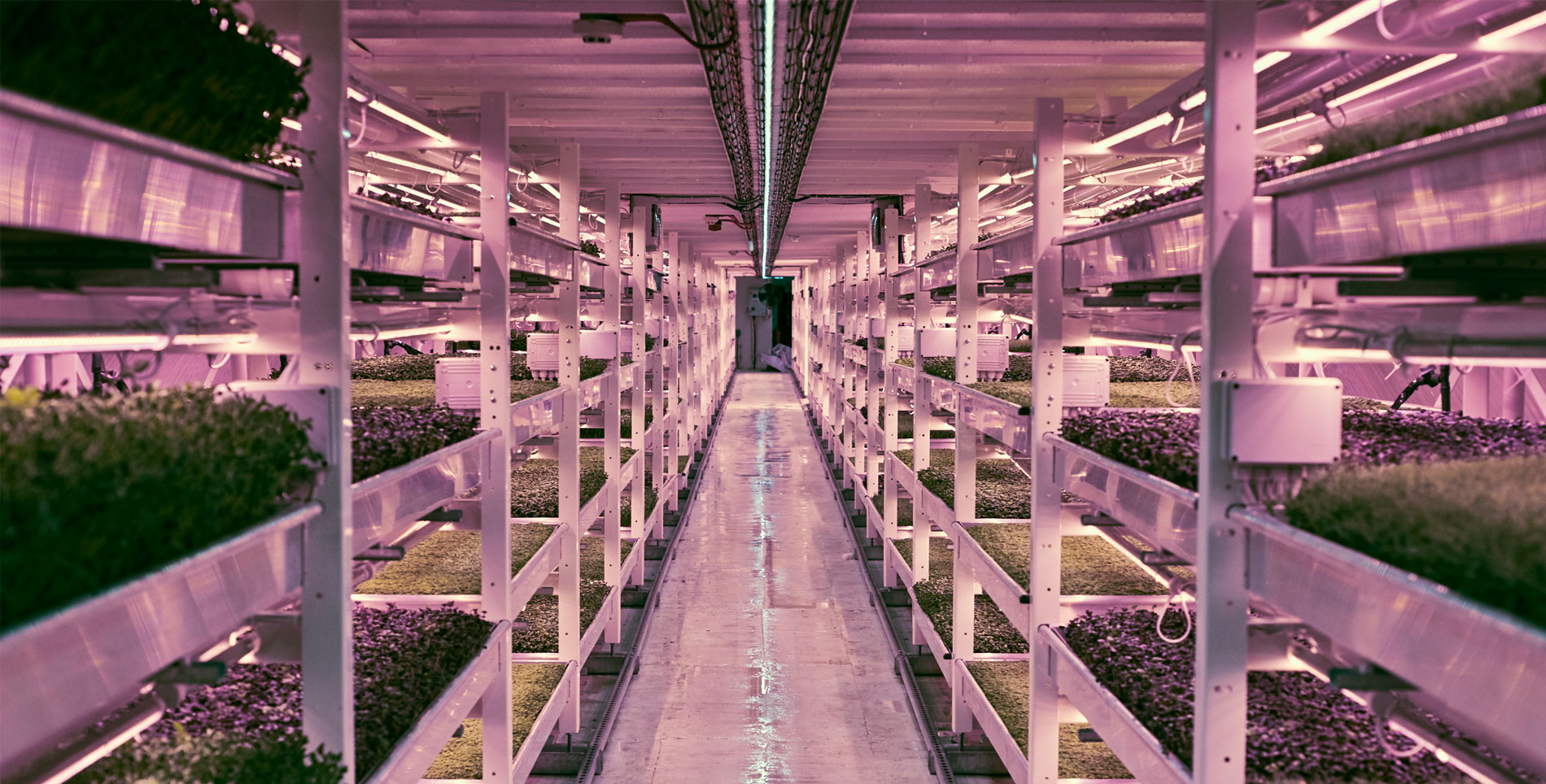Spending time below ground is a way of life for Londoners, traversing the sprawling metropolis via its iconic Underground railway network. Now, one hundred feet beneath the south London suburb of Clapham, a forward-thinking farm is making use of a unique subterranean space in an unusual new way.
“The first plant I ever grew was in a tunnel,” says Richard Ballard, sporting a white lab coat, rain boots, and a fetching blue hairnet. It’s not a typical uniform for a farmer, but then again, this isn’t a typical farm, evident in that Ballard’s “field” calls for a 180-stair descent into a former air raid shelter.
One hundred feet beneath the Northern line (one of many on the London Underground railway network), Ballard and co-founder Steven Dring run Growing Underground, producing hydroponically-grown salad leaves and micro-greens. “It’s in a family of seven deep-level shelters built between 1940 and 1942, stretching from Belsize Park in the north of London all the way through to Clapham South,” Ballard explains of the once-abandoned tunnels where the farm is located. They were originally designed to house 8,000 people each during World War II, but the farm currently only uses 1,600 square feet of the massive space.
Ballard moved to London to study film. While planning a documentary on how to feed growing cities, his research sparked a passion for unconventional farming, believing its role might be instrumental in the future. “I got hooked on the idea of farming underground,” he says. In 2012, inspired by economic and social theorist Jeremy Rifkin’s work in The Third Industrial Revolution and models of urban vertical farming pioneered by Columbia University professor Dickson Despommier, Ballard and Dring set about finding a space for their own downtown farm.




“We started out growing heads of lettuce with a very small hydroponic system,” Ballard says of their first experiments, running trials while raising funds for the project. “It was quite scary going down for the first time to check on our plants, into a dark tunnel on your own with no communication with the outside world. We had this drill where we’d phone each other and say, ‘I’m going down, and if I’m not out in an hour, send a search party.’”
By 2017, Growing Underground was supplying a range of local restaurants and supermarkets with specialty micro-greens like piquant purple radish, anise-scented fennel, Thai basil, and red amaranth. For major retailers like AmazonFresh, Whole Foods, and Marks & Spencer, they now pack combinations like their English Salad Mix made with pea and broccoli shoots plus mustard leaves, or the Italian Salad Mix with peppery baby rocket and onion-ish garlic chives. “They’ve got a real burst of herby freshness that complements the rich flavors of our dishes. One of our favorites has to be the micro cilantro,” says Alex Coppard, co-founder and chef at The Good Egg. The busy brunch haunt has two London locations, using Growing Underground goods to garnish their signature shakshuka and breakfast hashes. “We’ve always been insistent on being as sustainable and local as we possibly can with our ingredients,” Coppard continues. “Local produce is surprisingly abundant in a big city like London because of innovative growers like Growing Underground.”


Indoor hydroponic systems are able to significantly intensify typical crop yields, delivering a nutrient solution to plants in soil-free growing beds and using LED lights for warmth and photosynthesis. The futuristic set-ups are often touted as a sustainable, scalable solution for feeding rising populations in the coming decades thanks to their reduced water use, ability to use recycled water, and impressive efficiency.
“In the Northern Hemisphere, if you grow pea shoots the same height as ours above ground in soil, you’d get three or four harvests a year; in a greenhouse, you get twenty-five to thirty. In our farm, you get sixty harvests,” says Ballard, adding that while Growing Underground use a little more energy than a conventional farm, it’s powered by renewables. Meanwhile, chemical pesticides or insecticides aren’t required, climate change or unexpected weather are of no concern, and the sound ventilation means the farm naturally sits at around seventy-three degrees Fahrenheit throughout the year. Ballard continues, “In conventional agriculture in greenhouses, ninety-five percent of the energy use is for climate control, and agriculture is responsible for a third of CO2 emissions in the world.”
Looking ahead, Ballard is excited at the prospect of using their model in other sorts of disused spaces, and shares their plans for expanding into the next section of the bunker. With many average consumers disconnected from the people, places and methods that produce food, Growing Underground’s city location means the chance to go right to the source. “Being in the heart of a major city makes us attractive,” says Ballard. “People can easily come out and have a look around.” Another benefit of the central location is it can take as little as four hours to get their products into the hands of customers once they’re harvested.







Our comments section is for members only.
Join today to gain exclusive access.